The Heart of St. Camillus
(Homily delivered by Fr. Michael G. Gimena, MI, on the occasion of the Visit of the Heart Relic of St. Camillus at the Bicol Regional Training and Teaching Hospital, Legazpi City)
We gather today to reverence and pray before the heart of St. Camillus de Lellis, universal patron of the sick, hospitals and healthcare workers.
Over the years, this heart is venerated at the side altar (called the cubiculum) of the Camillian motherhouse in St. Mary Magdalene Church in Rome.
But its presence here in the Philippines, for the second time—the first being in preparation for the 400th death anniversary of Camillus in 2013—confronts us with challenges, as well as opportunities.
We 21st century netizens are not altogether at home with relics. But then again souvenirs and memorabilia are not completely foreign to our postmodern mindset.
It is said that whenever the US President signs into law a new piece of legislation which is said to be emblematic of his presidency, he invites a group of key supporters to the Oval Office for the signing and then presents the signing pen to someone who campaigned strongly for the cause of the legislation. We have much more than a pen here.
In secular Australia, where I was a missionary for eight years, we delight in some memorabilia too. We have museums for sports where jerseys, footballs, medals and trophies are valued, even the fastest-running horse in the races, named Phar Lap—dubbed as the ‘wonder horse’, was named a national icon and its body preserved in a museum in Melbourne to the public’s admiration. We have more than a horse here.
Here in the Philippines, don’t you ever wonder why Jose Rizal’s monument in Luneta is guarded by at least two soldiers 24/7? Guarding monuments of important people, soldiers and heroes, is a practice that is copied from the West, like the tomb of the Unknown Soldier in Arlington National Cemetery in the US as a sign of respect or a form of tribute for what the soldier or the hero has done for the country. Not only that, they said that the three engraved stars on Rizal’s monument are made of 26-karat gold. But we have more than an Unknown Soldier here. We have more than a national hero. We have more than a 26-karat gold here.
Because here, more than 400 years after his death, we are gathering before the heart of a recognized holy person who dedicated his life to the service of the sick.
It is not so much therefore just this preserved heart of St. Camillus that we are venerating him and asking for his intercession, but what this heart stood for, what this heart beat for and what this heart stands for now, what this heart is beating for now.
Perhaps we can even ask ourselves. What does my heart stand for? What does my heart beat for?
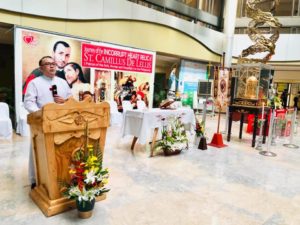 Why St. Camillus continues to inspire is because of this heart. This heart that symbolized love, care and compassion for the sick. This heart that beat for the suffering, the poor and the dying.
Why St. Camillus continues to inspire is because of this heart. This heart that symbolized love, care and compassion for the sick. This heart that beat for the suffering, the poor and the dying.
At the beginning of his life, his was actually a divided heart, a confused heart—not very loving, not committed, even corrupt, so to say. As a teenager and early adult, Camillus was known to be hot-tempered, hard-headed, and an addict to gambling. He even betted his own shirt and sword in gambling.
And yet God changed him, transformed him, converted him. From being then half-hearted, divided, confused heart to being wholehearted, committed and compassionate heart. Many say that his own sickness, his rotting leg wound was actually God’s way of getting through to him. For this affliction opened Camillus’ eyes to the sad situation of the sick; it also delivered him to the doorstep of his future life’s work: the hospital. From his affliction of being sick then came his affection towards the sick. He was a towering figure both literally—he was 6’7” (one of the tallest saints, if not the tallest saint) and a giant in charity, for his spirit is very much present today in the life of each Minister of the Infirm.
Nonetheless, Camillus too had many questions and doubts about his vocation, about what he had set his mind to do. But emboldened by God and assured of the presence of Christ in the sick and dying, he persevered.
It was told that one dark night in 1582, Camillus was in his moment of great pain, sorrow and uncertainty being made aware of a lot of criticisms and oppositions even from those whom he trusted, like his spiritual director, Fr. Philip Neri. He was about to give up, to resign, to call it quits. But when he was praying before the crucifix, he felt that our Lord extended his arms towards him with the comforting words: “Camillus, take courage, you faint-hearted! Continue the work you have begun. Do not be afraid, I will be with you for this work is mine.” This confidence and courage sustained Camillus throughout his life of whole-hearted service to the sick.
Camillus therefore is for the rest of us and like us. He had his weaknesses, his relapses, his failures. How many times he escaped hospital work just to gamble. How many times he fought with the hospital administration just because of his temperament and stubbornness. And even in his conversion, when he said “no more of the world, no more of the world”, he still fell and failed. But, the thing is, he never stopped trying. I think that’s where hardheadedness comes to good use. You’re hardheaded not to give 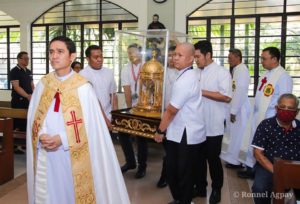 up. He never despaired to the point of giving up all hope. He knew, he was a soldier, and he battled on. Ultimately and simply for the love of God and, like the Good Samaritan, the love of neighbor in the sick.
up. He never despaired to the point of giving up all hope. He knew, he was a soldier, and he battled on. Ultimately and simply for the love of God and, like the Good Samaritan, the love of neighbor in the sick.
It is this heart, this love, this charity, that consequently overflowed and became the reason for which he is honored upon the altars of the Church today.
As we contemplate and venerate then this heart relic today, we commit ourselves anew to go from here wholehearted and fresh-hearted in our life, vocation and mission.
We do not stay focused on a petrified, preserved heart. Rather, we remember that St. Camillus, with this heart, always focused on Christ, and always embraced all people before him, especially the poor, the sick, the suffering and the dying.
We pray that like St. Camillus we can have a heart like his. Standing for those we love and beating for those we care for especially those who have no one to love and care for them. Amen.
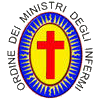


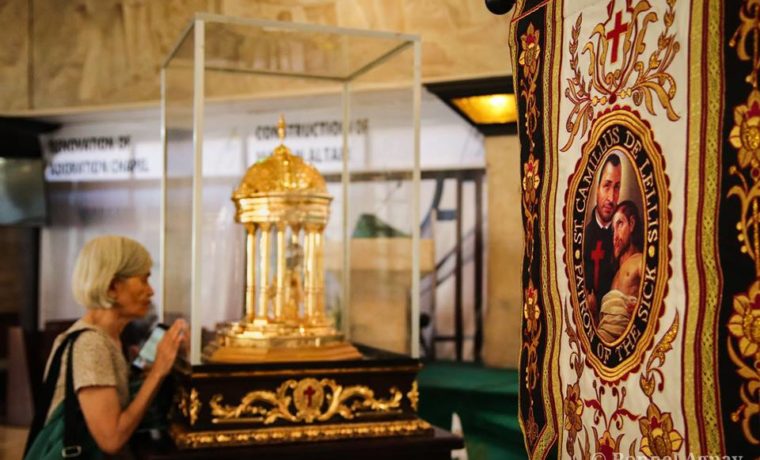
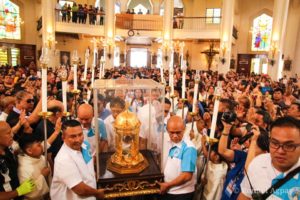
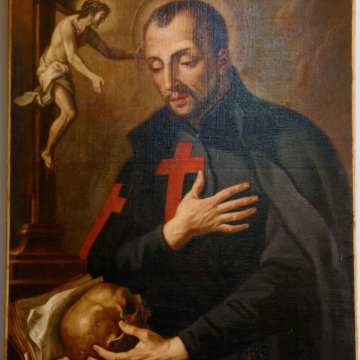

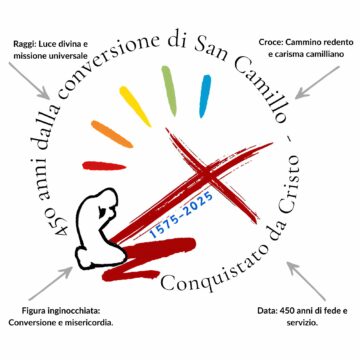


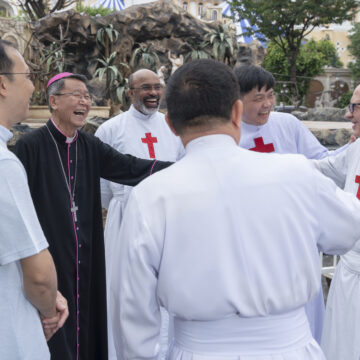

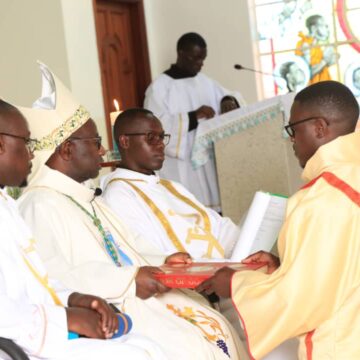
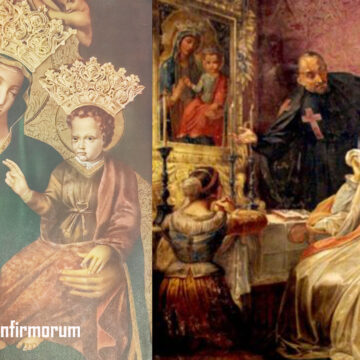
Camillians on Facebook
Camillians on Twitter
Camillians on Instagram